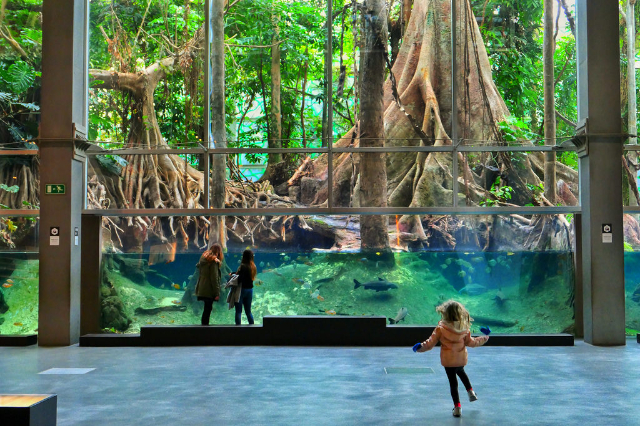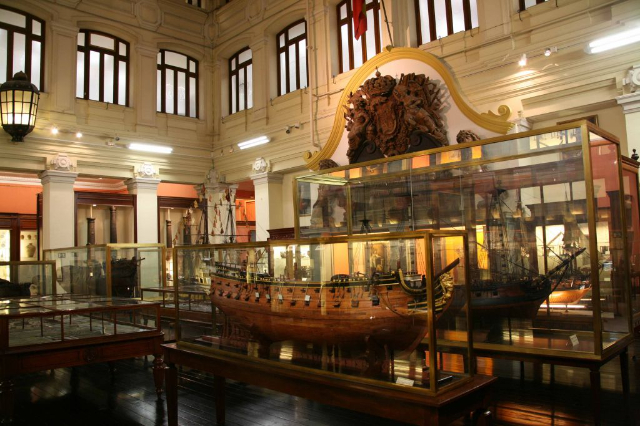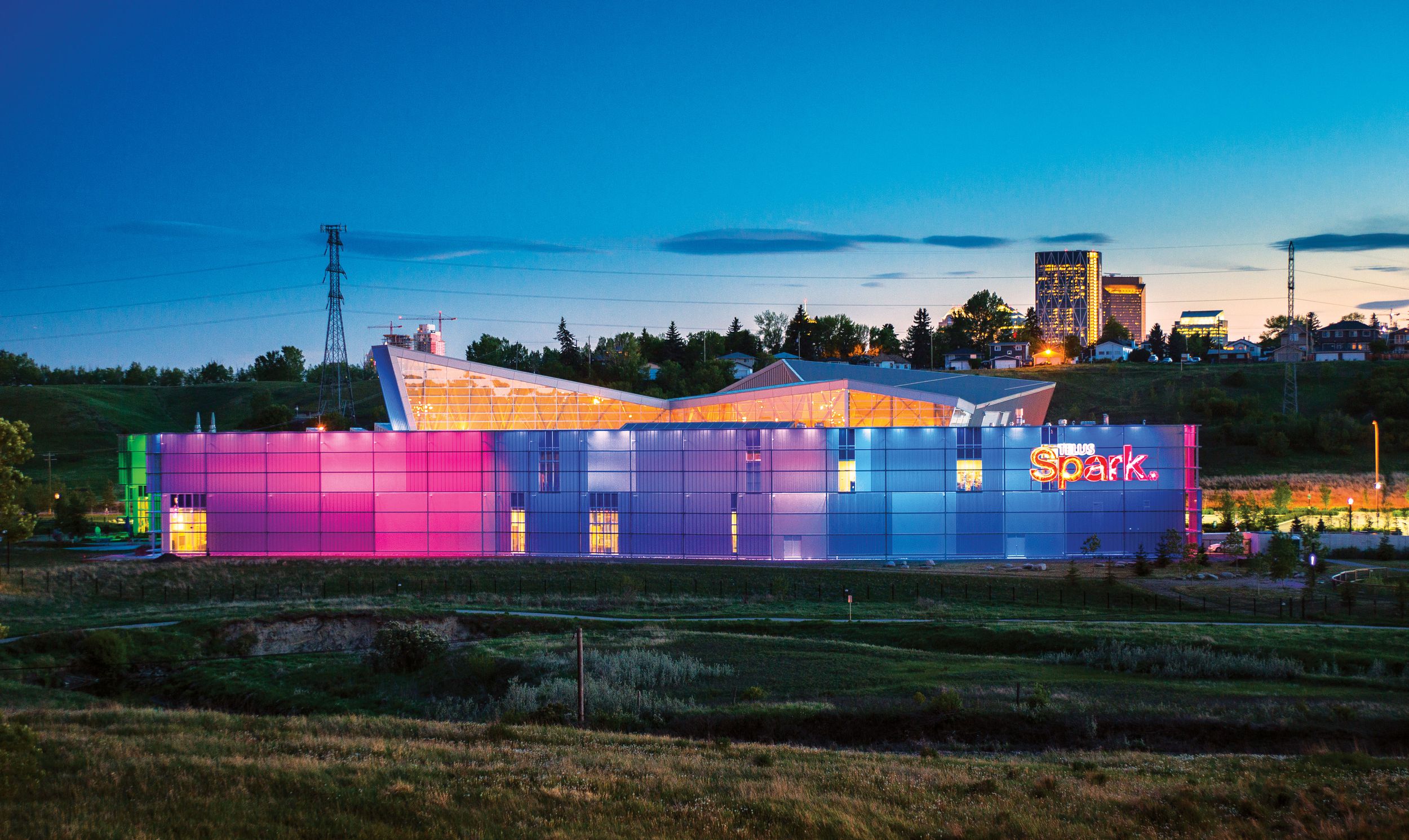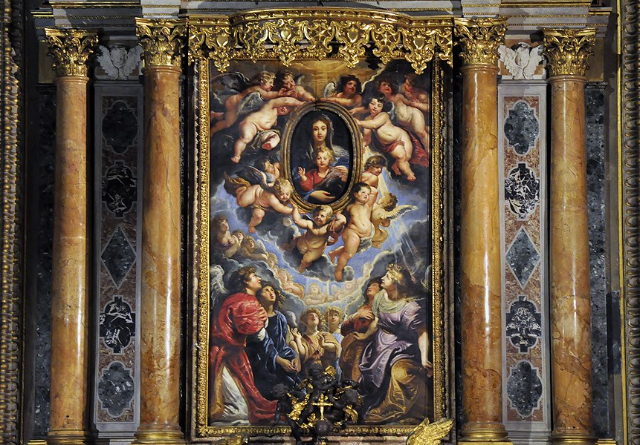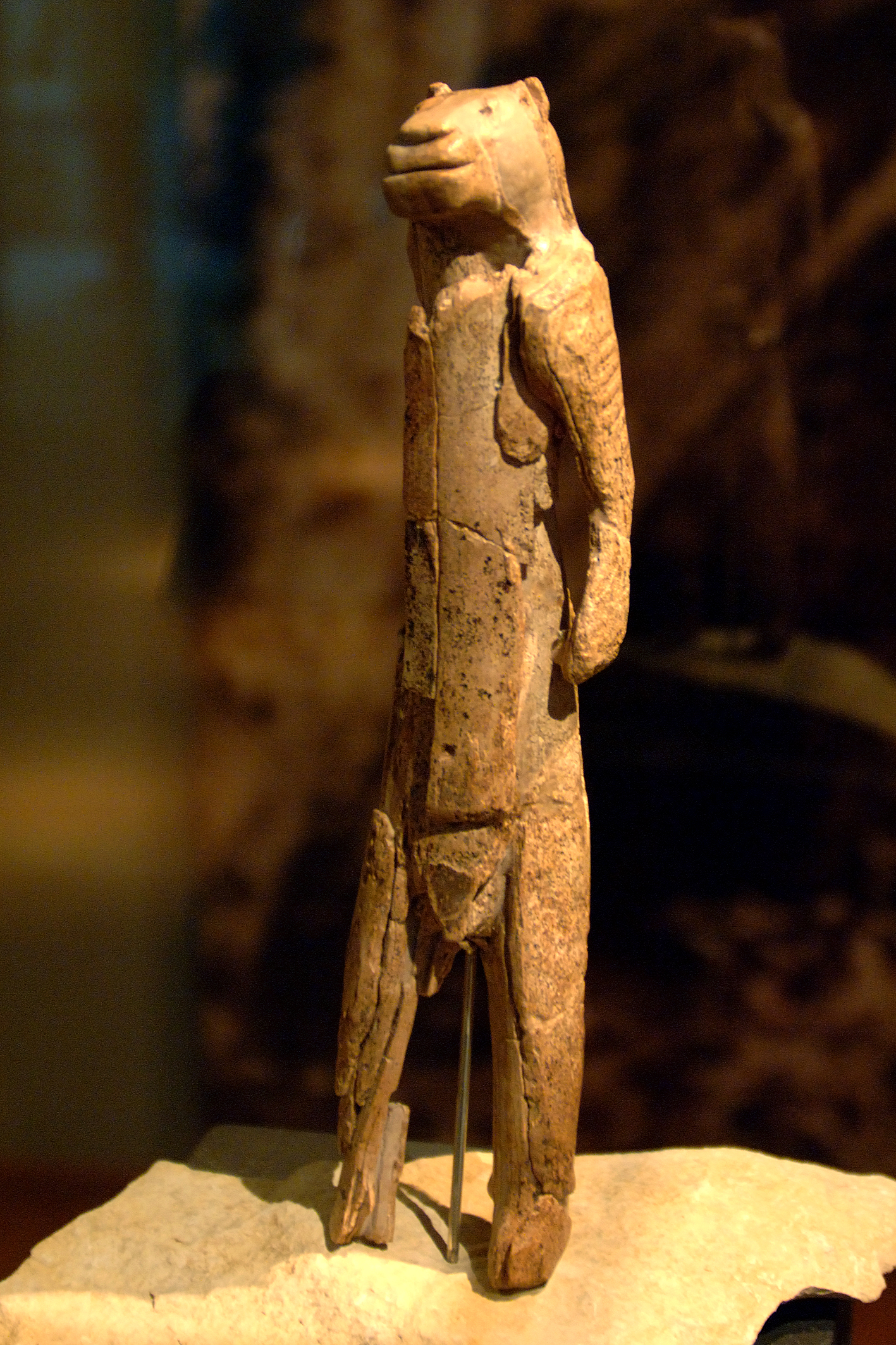Built for 100 million euros and opened in 2005, the Museum CosmoCaixa (pronounced “caisha”) for science is one of the most exciting and with over 30,000 m² also one of the largest museums in Barcelona and in Spain.
The museum center includes interactive nature exhibitions, a planetarium, a library and an experimental space for children. The main attraction is the exhibition dedicated to rainforests – you can see over 100 species of animals and feel the climate of the jungle on your own skin.
Once you are down in the basement floor, the first thing you see is an escalator that leads to a higher floor. But the CosmoCaixa wouldn’t enjoy such a good reputation world-wide if you could not already see the first attractions: the outside of the escalator is made of glass so that you can look right into it and see how it works.
You probably have heard of the Foucault pendulum back in physics class? The more than 40 m long thread pendulum with a heavy iron ball demonstrates the earth’s rotation. The pendulum moves and below it the earth rotates while the pendulum keeps swinging in a straight arc. This way, every couple of minutes the pendulum knocks over one of the little steles that are arranged around it in a circle. An original bob of the kind that Foucault used is exhibited as well.
In the lowest hall in the basement visitors can try out experiments from a wide range of scientific disciplines. In a vivid way you learn which kinds of waves exist and which kinds of waves there are in the sea. A wave simulator illustrates how waves form the shores.
Or you might want to produce a sand storm and see how sand dunes develop and move. Or you produce a tornado the eye of which you can even touch with your hands! There are many more interesting experiments with water and lots of optic and acoustic experiments.
The next section is all about geology. A model shows how the shape of a volcano develops. On the “mur geològic”, the geological wall, you can examine different types of rocks, such as folded rock formations that can also be found in the Alps. In addition to that, there are numerous experiments that demonstrate how the respective rock formations develop.
There are also temporary science exhibitions in the museum CosmoCaixa. Anyone who wants to find out more about our cosmos can look up to the stars at the planetarium (an extra fee is charged). Ask about show times at the information desk.
On the spacious outside grounds you can picnic or experience some more physical experiments. The largest one consists of two satellite dishes, about 80 m away from each other, which show how easily sound waves are transmitted: one person talks into the satellite dish on one end and the other one can hear the words despite the distance between the two.
For good reasons the museum enjoys an excellent reputation. Not only children will enjoy the experiments. The museum is really worth a trip, but you should arrange enough time for it (at least 2 to 3 hours).
